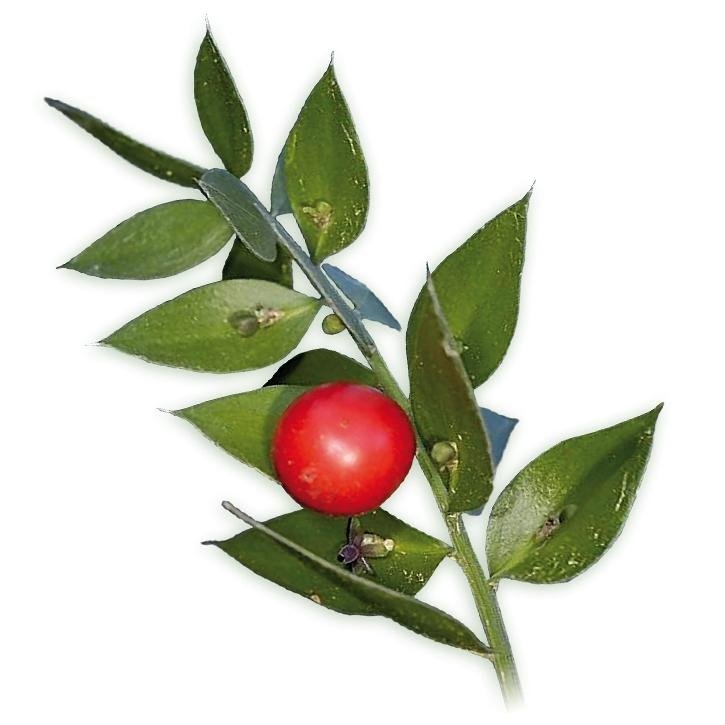Bibliography
- Real Farmacopea Española, 1997.
- British Herbal Pharmacopoeia, 1983.
- Herbal Drugs and Phytopharmaceuticals. Norman Grainger Bisset (Ed). Max Wichtl. CRC Press.1994.
- Plantas Medicinales y Drogas Vegetales para infusión y tisana. Edición española a cargo de: Salvador Cañogueral, Roser Vila, Max Wichtl.1998.
- Plantas Medicinales. Margarita Fernandez y Ana Nieto. Ed Universidad de Navarra. EUNSA 1982.
- Fitoterapia: Vademecum de Prescripción. Plantas Medicinales. Colaboran: Asociación española de médicos naturistas. Colegio Oficial de Farmacéuticos de Vizcaya.
- Matière Médicale (tomo II). RR Paris - H. Moyse. Masson 1981.
- Blumenthal, Busse, Goldberg, et al: The Complete German Commission E Monographs: Therapeutic Guide to Herbal Medicines. The American Botanical Council, Austin, TX; 1998.
- Blumenthal M, Goldberg A, Brinckmann J. Herbal Medicine, Expanded commission E Monographs. Integrative Medicine Communications , Newton. First Edition, 2000; pp 47-51.
- Fitoterapia Aplicada. J.B. Peris, G. Stübing, B.Vanaclocha. Colegio Oficial de Farmacéuticos de Valencia 1995.
- Pharmacognosy, Phytochemistry, Medicinal Plants. Jean Bruneton. Lavoisier Publishing.
- Plantas Medicinales. El Dioscórides Renovado. Pio Font Quer.
- Guía de Campo de las Flores de Europa. Oleg Polunin. Ediciones Omega S.A. Barcelona, 1977.
- Pharmacognosy 9th edition. Varro E. Tyler – Lynn R. Brady – James E. Robbers.
- Jean Bruneton. Farmacognosia. Fitoquímica Plantas Medicinales. 2ª Edición. 2001. Ed Acribia. S.A.
- Bulletin officiel Nº 90/22 bis" del "Ministère des Affaires Sociales et de la Solidarité, Médicaments a base de Plantes.
- French Public Health Code.
- Benigni, R; Capra, C; Cattorini, P. Piante Medicinali. Chimica, Farmacologia e Terapia. Milano: Inverni & Della Beffa, 1962.
- Bézanger-Beauquesne, L; Pinkas, M; Torck, M. Les Plantes dans la Therapeutique Moderne. 2ª. Paris: Maloine, 1986.
- Bézanger-Beauquesne, L; Pinkas, M; Torck, M; Trotin, F. Plantes Médicinales des Regions Tempérées. Paris: Maloine, 1980.
- Carretero E. Terpenos III: triterpenos y esteroides. Panorama Actual Med 2001; 25 (240): 124-30.
- Werbach and Murray. Botanical influences on illness. Third Line Press. 1994.
- Max Rombi. 100 Plantes Medicinales. Editions Romart. 1998.
.- Catálogo de Plantas Medicinales. Consejo General de Colegios Oficiales de Farmacéuticos. 2003.
- Werbach MR & Murray MT: Botanical influences on Illness: a sourcebook of clinical research. Third Line Press, Tarzana, CA; 1994.
- Fetrow C & Avila J: Professional's Handbook of Complementary and Alternative Medicines. Springhouse Corporation, Springhouse, PA; 1999.
- Moore M: Herbal Materia Medica, 5th ed. Southwest School of Botanical Medicine, Bisbee, AZ; 1995: 25.
- Murray MT. The Healing Power of Herbs. Rocklin, CA: Prima Publishing Co.; 1983:35.
- McGuffin M, Hobbs C, Upton R, et al. American Herbal Products Association's Botanical Safety Handbook. Boca Raton, LA: CRC Press; 1997:100.
- Potterton D: Culpepper's Color Herbal. Sterling Publ Co, New York, NY; 1983: 35.
- Anon. Monograph. Ruscus aculeatus (butcher's broom). Alternative Medicine Review. 2001;6(6):608-612.
- Anon: Butcher's broom. In: DerMarderosian A, Beutler JA, eds. Facts and Comparisons: The Review of Natural Products. St. Louis, MO, Facts and Comparisons. February 2003.
- Jellin JM, Gregory P, Batz F, Hitchens K, et al, eds. Pharmacist's Letter/Prescriber's Letter. Natural Medicines Comprehensive Database, 3rd Edition. Stockton CA: Therapeutic Research Facility, 2000.
- Grieve M. A Modern Herbal, vol I. New York: Dover Publications, 1971, 128–29.
- Weiss RF. Herbal Medicine. Gothenburg, Sweden: Ab Arcanum, 1988, 117–18.
